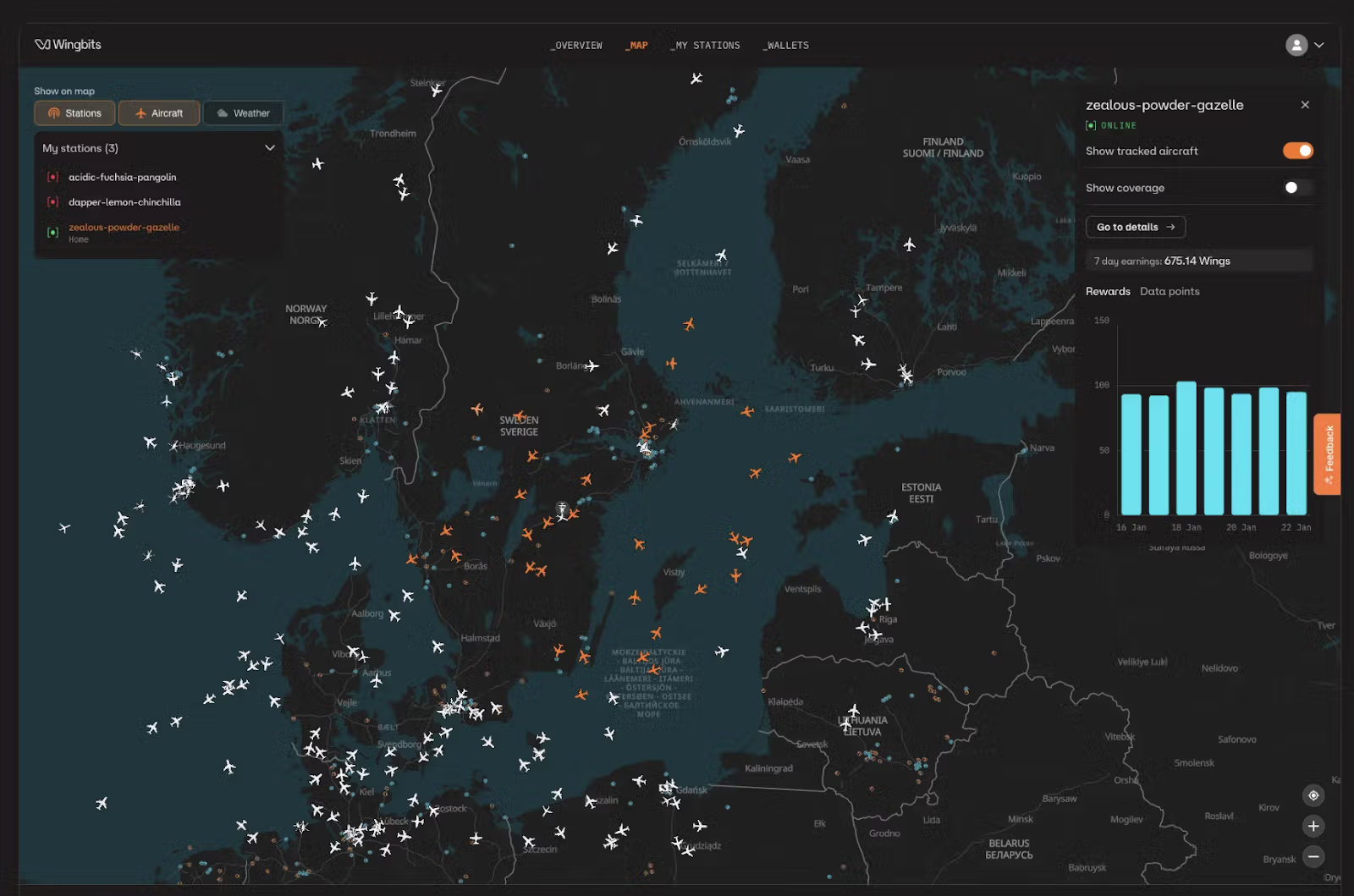2025 Sees Innovations in DePIN and AI Addressing Real-World Challenges
DePIN: Decentralized Physical Infrastructure Networks
DePIN projects aim to provide utility in crypto, yet many do not solve real-life problems or possess viable business models. A notable exception is Wingbits, a flight-tracking network that uses Web3 incentives to enhance data collection.
- Current flight-tracking companies rely on enthusiasts to set up ADS-B receivers for data collection.
- Enthusiasts lack incentives to optimize receiver placement, leading to poor coverage in rural areas.
- Wingbits incentivizes users to strategically position stations, improving data quality and coverage.
- They achieved 75% coverage of major networks with only 1/11th the number of stations compared to traditional systems.

Figure 1: Wingbits flight tracking map
Crypto x AI
The demand for computing power fluctuates, impacting GPU prices. Exo Labs has developed a system that allows edge computing using consumer devices while maintaining data privacy.
- Exo Labs' pipeline parallel inference splits large language models into “shards” that run on different devices.
- This method enhances security, reduces costs, and improves latency.
- Bagel AI's ZKLoRA enables fine-tuning of LLMs without compromising sensitive data.
- Blocksense introduces zkSchellingCoin consensus to validate AI outputs by cross-referencing results from multiple models.

Figure 3: A 9-layer model is divided into 3 shards, each running on a separate device
The integration of DePIN and AI emphasizes solving real-world challenges through innovative solutions. Projects like Wingbits and Exo Labs demonstrate the potential for blockchain and AI to create impactful applications in various industries.